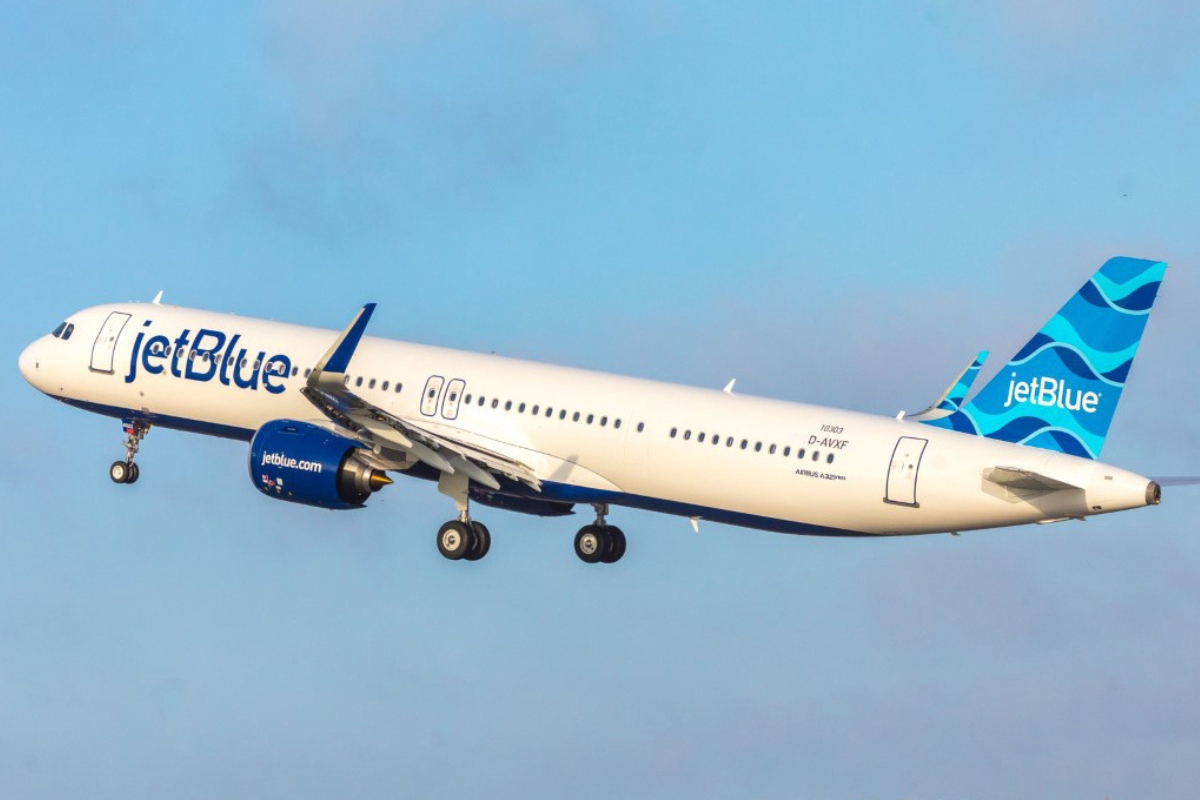
A JetBlue flight from London Heathrow to New York JFK was forced to make an emergency diversion to Shannon Airport in Ireland over the Easter weekend after the pilots had to shut off one of the two engines of the brand new Airbus A321neo aircraft.
The incident occurred because one of the Pratt & Whitney geared turbofan engines suffered a compressor stall as JetBlue flight B6-2220 had just passed the coast of Ireland for its transatlantic crossing to New York on March 30.
The pilots immediately shut down the affected engine and diverted to Shannon, where the airport fire service was waiting for its arrival as a precautionary measure. The aircraft (registration N2180J) remains grounded at Shannon, and it’s not known when it might return to service.
The A321neo LR (long-range) was manufactured at Airbus’ U.S. factory in Mobile, Alabama, and it was only delivered to JetBlue in March. The aircraft had only operated three other commercial flights and had only once successfully crossed the Atlantic before the engine mishap.
JetBlue uses turbofan engines manufactured by Pratt & Whitney. The troubled manufacturer discovered a major issue with its A320neo-family engines last year, which has forced airlines around the world to ground aircraft for additional inspections.
New York-based JetBlue estimates that it will have around 11 A320 series aircraft grounded at any one time throughout 2024 for P&W engine inspections. At some point throughout the year, the airline estimates that as many as 15 aircraft at any one time might be out of action for engine inspections.
The issue was linked to a powdered metal used in the manufacture of these engines for a period stretching from the end of 2015 through to mid-2021, which could cause cracking in stage 1 and stage 2 disks in the high-pressure turbine.
Given the fact that P&W identified the issue last year, it would suggest that new engines shouldn’t have this problem, so the engine failure on JetBlue flight B6-2220 might be down to another reason.
JetBlue did not immediately respond to a request for comment.
Mateusz Maszczynski honed his skills as an international flight attendant at the most prominent airline in the Middle East and has been flying ever since... most recently for a well known European airline. Matt is passionate about the aviation industry and has become an expert in passenger experience and human-centric stories. Always keeping an ear close to the ground, Matt's industry insights, analysis and news coverage is frequently relied upon by some of the biggest names in journalism.







